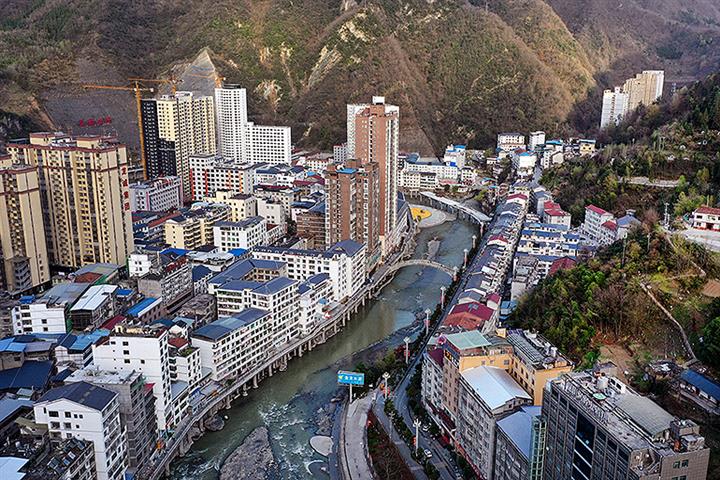 Urbanization Rate Exceeds 70% in Eight Chinese Provincial Regions
Urbanization Rate Exceeds 70% in Eight Chinese Provincial Regions (Yicai Global) June 6 -- Urbanization, a major driver of economic growth, has surpassed 70 percent in eight provincial administrative regions in China, including Liaoning and Chongqing.
Besides Beijing and Shanghai, the group of eight includes provinces and municipalities such as Guangdong, Jiangsu, Zhejiang, and Tianjin, according to data released by the National Bureau of Statistics.
Last year, China's urban population reached 914.25 million and the total urbanization rate was 64.7 percent, according to the NBS. But the level of development varies across different regions.
The three major municipalities of Shanghai, Beijing, and Tianjin all logged urbanization rates above 80 percent last year. That of the fourth municipality on the list, Chongqing, was 70.32 percent, beating all other central and western regions, as well as the southeastern powerhouse of Fujian province.
Guangdong province is known for the biggest gross domestic product among Chinese regions. The southern province had an urbanization rate of 74.63 percent last year, ranking fourth among all regions.
But the level of economic development is uneven. For example, six cities in the highly developed Pearl River Delta recorded urbanization rates above 86 percent. Shenzhen's urbanization rate was as high as 100 percent. On the other hand, the rate of Zhanjiang, located in the less developed western parts of Guangdong, is below 46.5 percent, far lower than the national average.
Jiangsu province, which has the second-highest GDP in China, recorded an urbanization rate of 73.94 percent. Similar to Guangdong, Jiangsu has countryside. Northern parts of the eastern province have smaller towns than the southern parts.
Ten provinces logged urbanization rates below 60 percent. These include the Tibet Autonomous Region, the Xinjiang Uygur Autonomous Region, Yunnan, Gansu, Guizhou, Guangxi Zhuang Autonomous Region, and Sichuan provinces in western China. Moreover, the list has Henan and Hunan provinces in central China, and the eastern province of Anhui.
Except the two less populated autonomous regions of Tibet and Xinjiang, Niu Fengrui, a researcher at the urban development and environment institute of the Chinese Academy of Social Sciences, said to Yicai Global. The remaining eight areas with low urbanization rates are mainly located in northern China’s Huang-Huai-Hai Plain or southwestern China, Niu said, adding that since these areas have many residents, the potential for further concentration of population in cities is great.
Southwestern China's Guangxi, Yunnan, and Guizhou, which rank lower than the national average, will see increasingly high urbanization rates as when the economy develops, more university students graduate in these areas and they are likely to be moving to cities for work, Niu explained.
Editors: Tang Shihua, Emmi Laine, Xiao Yi